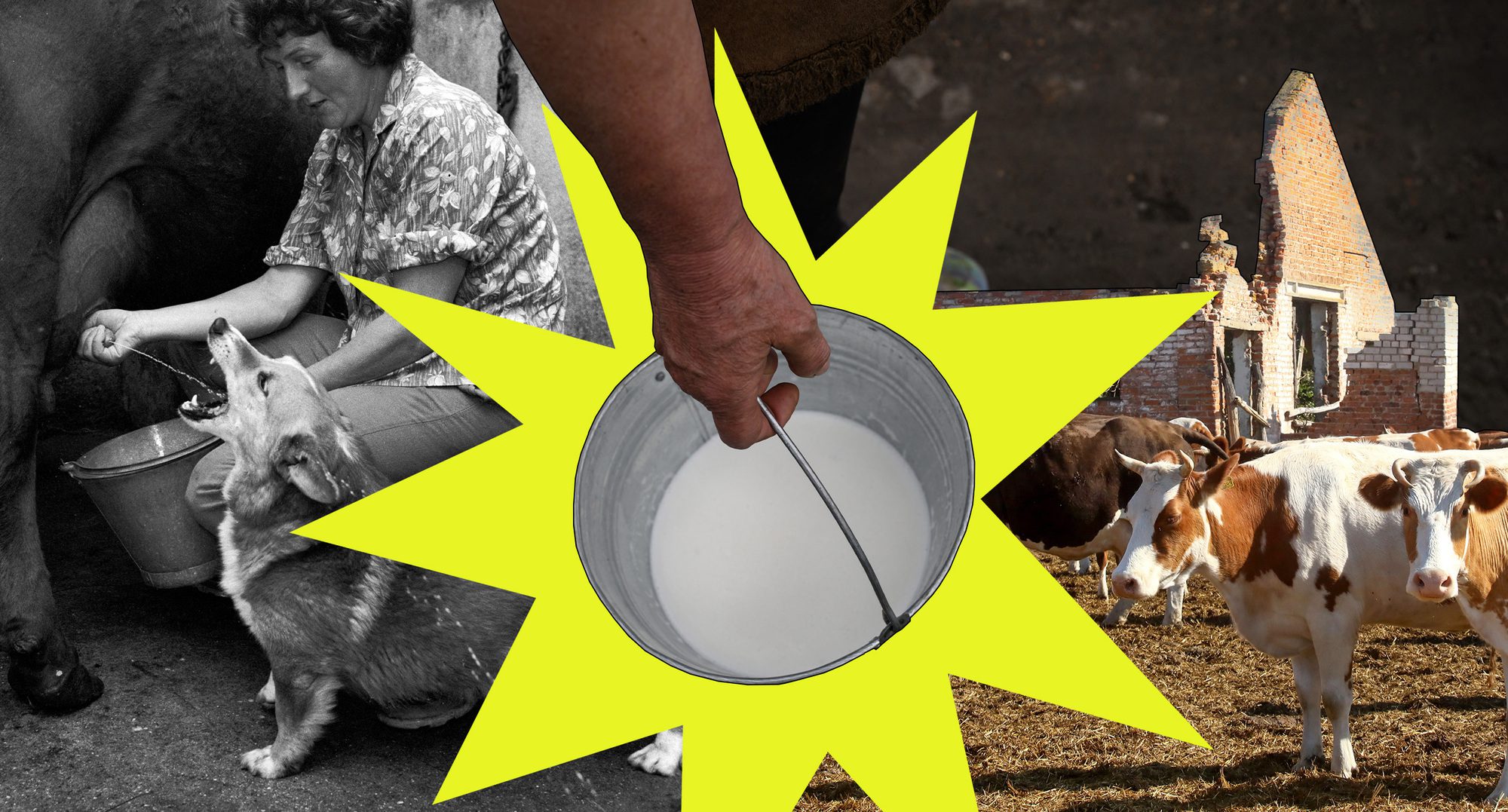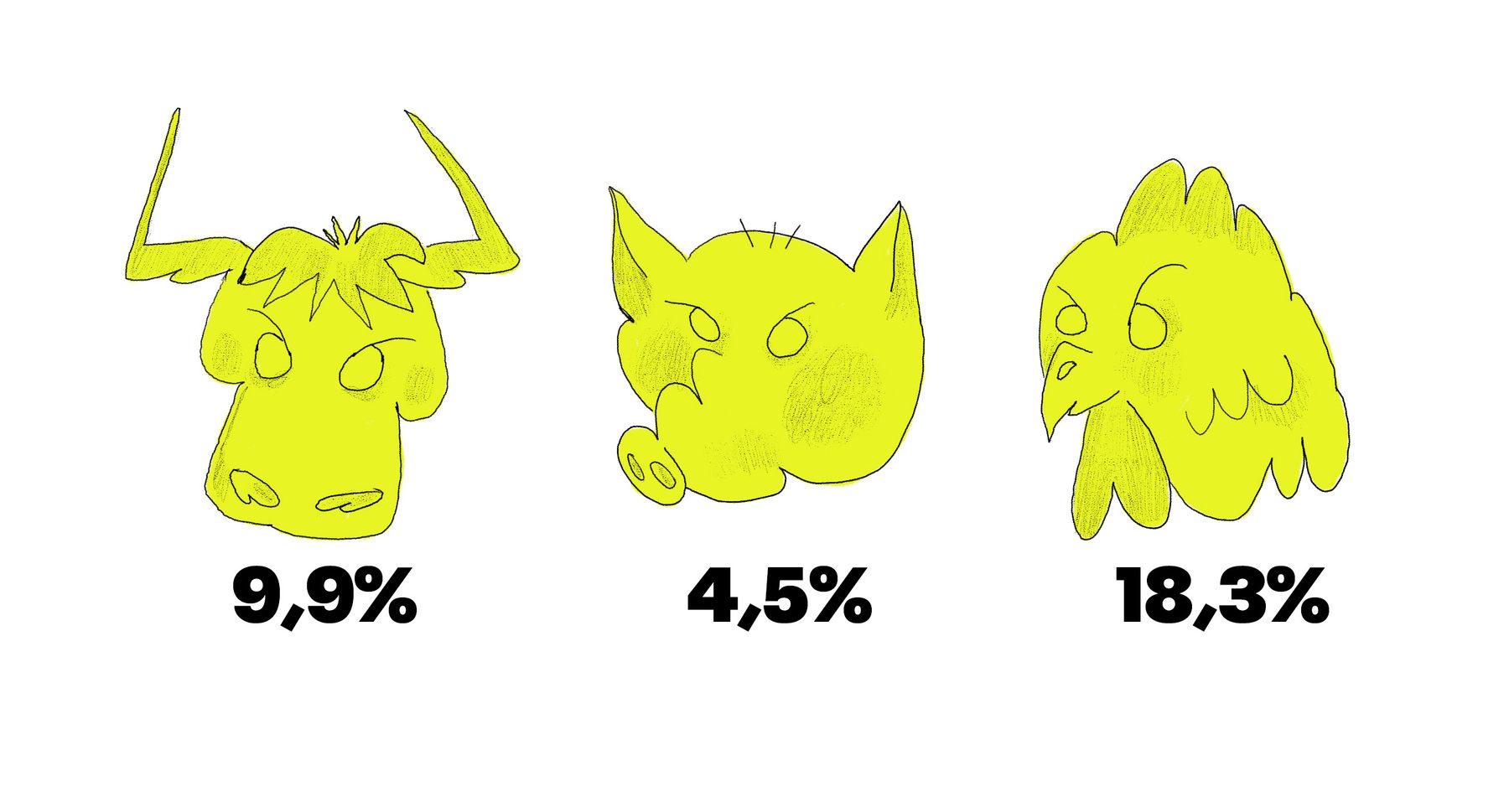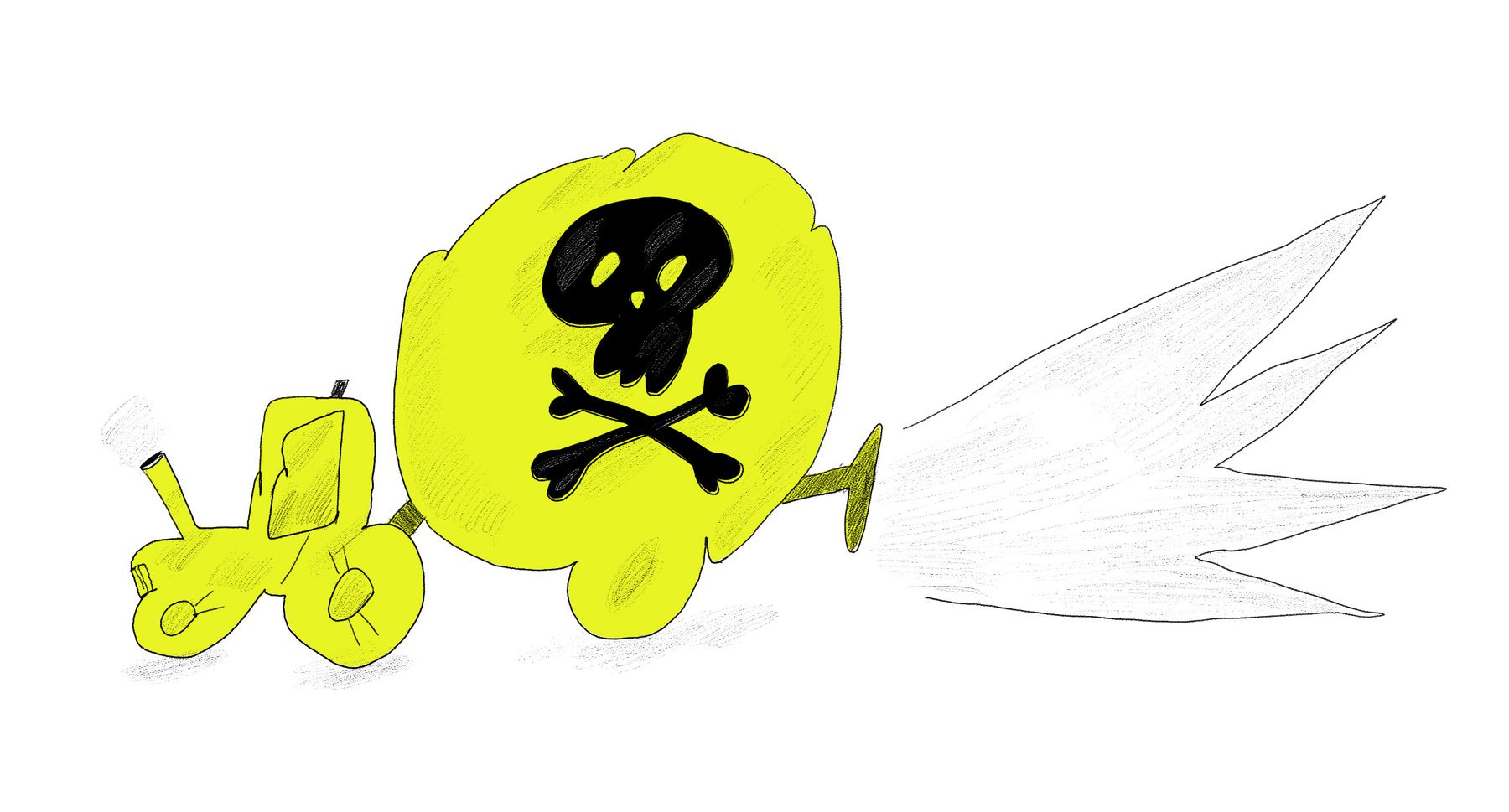Since Russia’s full-scale war against Ukraine began, the dairy industry has been going through one of the most challenging periods. During the first few months, ten regions of Ukraine were in the combat zone, with more than 43% of the total commercial cattle population and almost 42% of milk production for processing. In total, about 800 industrial dairy farms were affected by the war.
Taras Besarab learned about the economic effect of the war on animal husbandry and the ecological impact on farming.
Losses of domestic animals during the war
During the almost two years of war, Ukraine has lost about 12% of its cattle, primarily due to the complete or partial destruction of farms and the death of livestock. However, this does not reflect the actual losses due to the objective inability of several regions to provide statistical reports.
“According to preliminary data from the State Statistics Service, as of December 1, 2023, there are 2343.2 thousand cattle in Ukraine’s household and industrial sector, of which 1305.2 thousand are cows. Over the past year, the number of cattle in Ukraine has decreased by 160.3 thousand heads (-6.8%), and the number of cows has decreased by 74.8 thousand heads (-5.7%),” said Georgy Kukhaleishvili, an analyst at the Association of Milk Producers.
A situation typical of the frontline areas is the loss of a significant number of cattle as a result of shelling by Russian troops. Animals that have been injured are sent for slaughter, and their reproductive capacity and health have declined due to poor feeding. In critical parts, such as Kharkiv, Sumy, and Chernihiv regions, losses could have been as high as 50%. In other regions, however, the number of cattle has increased due to the relocation of enterprises. In particular, more than half of Ukraine’s livestock is concentrated in Khmelnytsky, Vinnytsia, Poltava, Ternopil, and Zhytomyr regions.
What is happening to the meat industry?
The situation in Ukraine’s meat production sector is somewhat different. Before the full-scale invasion, the total number of livestock was 2.6 million, of which 1.6 million were cows. However, while more than 40% of beef production was in the areas with active hostilities, pork and chicken production is more evenly located across the country. According to Taras Vysotskyi, First Deputy Minister of Agrarian Policy, meat imports increased by 10% this year and reached 95% of 2021 figures.
“Ukraine has all the prerequisites for the effective development of the meat industry and realizing its export potential. The growth rate of livestock this year is positive. Since the beginning of the year, the number of cattle has increased by 9.9%, pigs by 4.5%, and poultry by 18.3%,” the official said. Vysotskyi noted that poultry and pork production is expected to stabilize in 2024.

Illustration: Kateryna Kruhlyk / Zaborona
Environmental aspects of the loss of animals
One hundred ten cows and calves were shot in Ivanivka. 2000 were killed in Shestakove. More than 4 million chickens were starved to death in Chornobaivka. This is only a tiny known share of the examples of the killing of animals by the Russian military over the past 1.5 years. The total number of animal deaths has now exceeded 10 million. This can cause irreparable environmental consequences, including
- contamination of soil and water bodies;
- increased risk of spreading diseases to other animals through contact with corpses or insects;
- problems with the disposal of numerous carcasses, which can be a severe obstacle to restoring and maintaining natural balance.
However, it is not only the death of animals that poses a threat to the environment. Mariya Diachuk, a sustainable agriculture specialist at the NGO Ecodia, explains that farms themselves are often dangerous to the environment throughout Ukraine.

“In almost every region, there are situations where local residents struggle with livestock farms that do not handle waste properly: they dump sewage. This leads to environmental pollution, contamination of wells, and a deterioration in the well-being of citizens,” the expert says.
It is almost impossible to clean up contaminated groundwater, which then fills wells, emphasizes Mariya. Preventing such pollution is an effective method. And to ensure that farmers and agrarians comply with the relevant rules, the state needs to implement the Nitrate Directive, which is included in the requirements of Ukraine’s European integration.

Illustration: Kateryna Kruhlyk / Zaborona
Challenges for the environment during the war
Non-point source pollution (NSP) in agricultural activities includes
- overgrazing — negatively affects soil and bank integrity, increases bank erosion, increases the spread of undesirable invasive species, destroys habitats for aquatic organisms, and destroys shoreline vegetation that filters water;
- non-compliance with the timeframe or frequency of plowing;
- excessive, incorrect, or untimely use of pesticides, irrigation water, and other fertilizers.
Pollutants that result from farming and livestock include sediment, nutrients, pathogens, pesticides, metals, and salts, explains water protection expert Mariana Ginzula.

“The most common source of agricultural water pollution is soil that is washed off fields. Rainwater carries soil particles (sediment) and discharges them into neighboring water bodies. Excess sediment can cause water to become cloudy, which reduces the amount of sunlight that reaches aquatic plants. Sediment can also clog fish gills or cause a lack of oxygen for fish eggs,” she notes.
In addition, other pollutants such as fertilizers, pesticides, and heavy metals often attach to soil particles and wash into water bodies, causing algae blooms and oxygen depletion, which is fatal to most aquatic organisms.
“Farmers apply nutrients such as phosphorus, nitrogen, and potassium in the form of chemical fertilizers, manure, and sludge. When these sources exceed the needs of plants or are applied just before it rains, nutrients can leach into aquatic ecosystems, causing blooms. These blooms can limit swimming and boating, give an unpleasant taste and odor to drinking water, and cause fish kills by taking oxygen away from the water. High nitrate concentrations in drinking water can cause methemoglobinemia, a potentially fatal disease,” the expert explains.
Runoff from improperly maintained farms can carry pathogens due to the accumulation of large amounts of manure in small areas, and the nutrients, organic and solids that pollute aquatic ecosystems and cause oxygen deficiency. Groundwater can also be contaminated by seepage.
“Insecticides, herbicides, and fungicides are used to kill agricultural pests. These chemicals can enter and pollute water through direct application, agricultural runoff, and precipitation. They can poison aquatic life, contaminate food sources, and destroy the habitat that aquatic species use to protect themselves,” summarizes Mariana Ginzula.

Illustration: Kateryna Kruhlyk / Zaborona
Dynamics of the Ukrainian dairy and meat markets: losses, exports, and development prospects
Of course, due to the decline in livestock numbers in 2023, milk production decreased compared to last year. However, demand for it in the domestic and foreign markets has also fallen. This is due to a decrease in the purchasing power of the Ukrainian population during the wartime period and Ukrainians leaving the country. The situation in foreign markets is similar due to consumer inflation.
However, despite the decline in milk yields, production and exports of dairy products have been growing since mid-autumn. According to preliminary data from the State Statistics Service of Ukraine, in October 2023, Ukraine exported 8,790 tons of dairy products worth $18.15 million, more than 20% more than the previous month.

The situation with meat products is sometimes better. Taras Vysotskyi, First Deputy Minister of Agrarian Policy, said that Ukraine is increasing exports of meat and meat products: “For any industry, foreign trade is a key motivating factor for development. The volume of meat and meat product exports increased by 11.9% in 8 months of 2023. Its value amounted to $617.1 million. At the same time, we imported significantly less — by 35.2%, which amounts to $116.6 million.”
Ukraine plans to quadruple the number of pigs by 2025. This, according to experts from the relevant ministry, will help reduce the domestic price of pork and increase meat exports as opposed to cheap grain exports.








